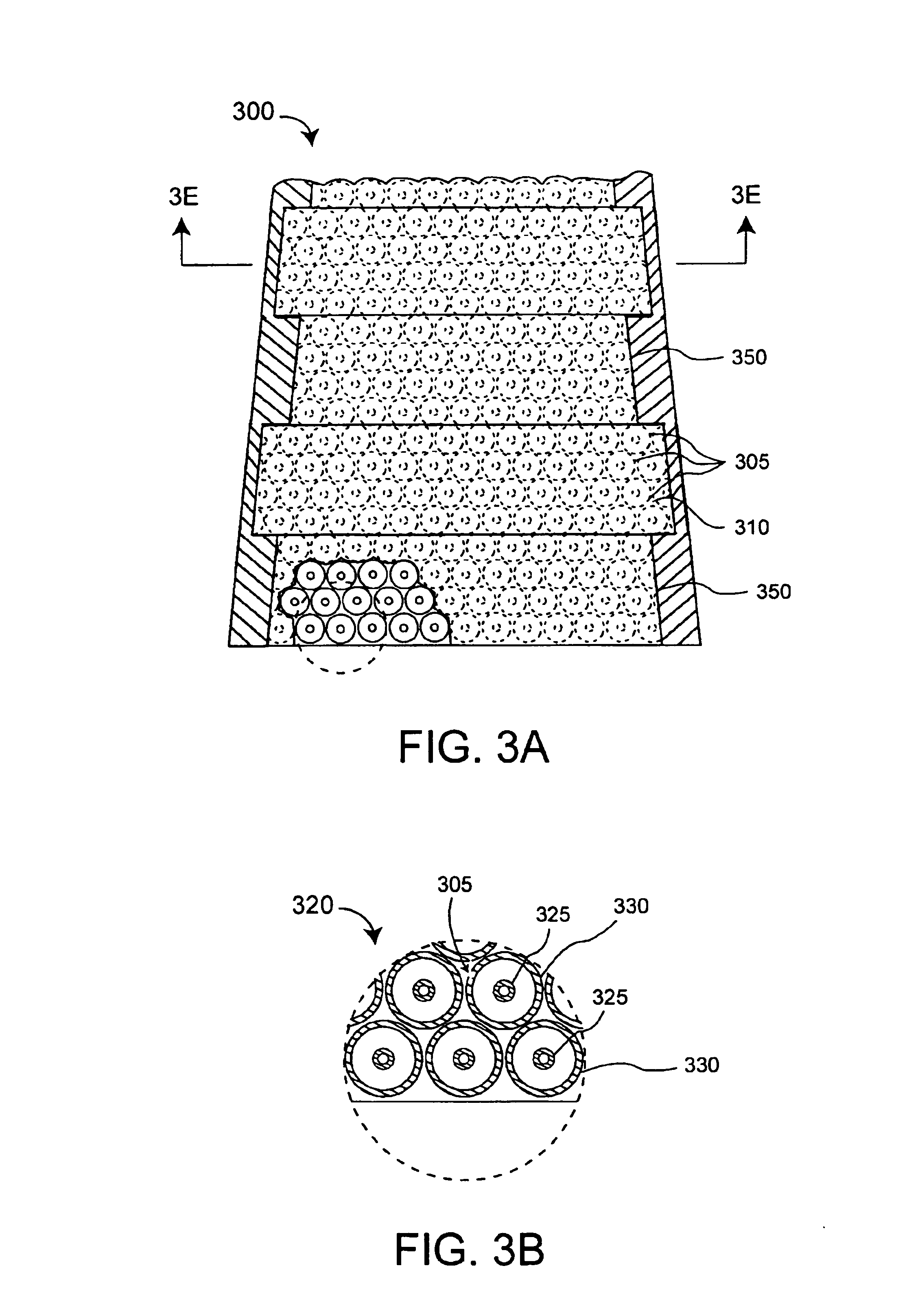Multi-band horn antenna using corrugations having frequency selective surfaces
a frequency selective surface and multi-band technology, applied in the direction of horns, simultaneous aerial operations, waveguide horns, etc., can solve the problems of limiting the operational bandwidth of a waveguide, other modes with different field configurations can occur unintentionally or deliberately, and the operational frequency and bandwidth of conventional waveguides are limited
- Summary
- Abstract
- Description
- Claims
- Application Information
AI Technical Summary
Problems solved by technology
Method used
Image
Examples
Embodiment Construction
The present invention concerns a multi-band horn antenna (multi-band horn) 100 which includes corrugations having frequency selective surfaces (FSS's), an example of which is shown in FIG. 1A. A cross sectional view of the multi-band horn antenna 100 taken along section lines 2—2 is shown in FIG. 2. Although the multi-band horn 100 shown has a pyramidal shape, the skilled artisan will appreciate that horns are available in a number of different shapes and the invention is not so limited. For example, the horn can be cylindrical, conical, parabolic, or any other suitable shape.
Making reference to FIGS. 1A and 2, the multi-band horn 100 can include a first horn section 105 and a second horn section 110 which is concentrically disposed within the first horn section 105. At least one of the horn sections 105, 110 can be a corrugated horn which includes circumferential grooves, or corrugations 150, along the interior walls of the antenna. An enlarged view of an exemplary horn section 160...
PUM
 Login to View More
Login to View More Abstract
Description
Claims
Application Information
 Login to View More
Login to View More - R&D
- Intellectual Property
- Life Sciences
- Materials
- Tech Scout
- Unparalleled Data Quality
- Higher Quality Content
- 60% Fewer Hallucinations
Browse by: Latest US Patents, China's latest patents, Technical Efficacy Thesaurus, Application Domain, Technology Topic, Popular Technical Reports.
© 2025 PatSnap. All rights reserved.Legal|Privacy policy|Modern Slavery Act Transparency Statement|Sitemap|About US| Contact US: help@patsnap.com



